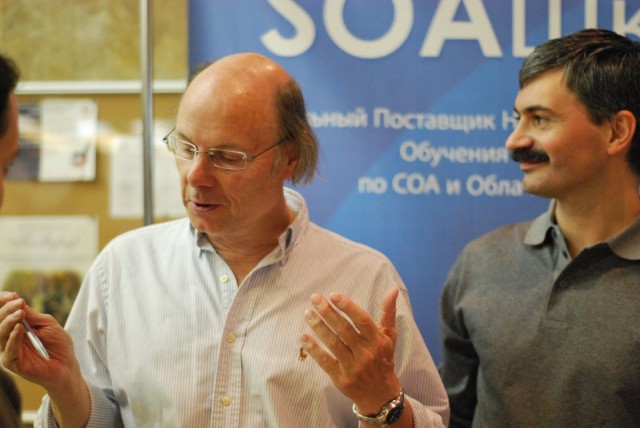Huffman encoding is a way to assign binary codes to symbols that reduces the overall number of bits used to encode a typical string of those symbols.
For example, if you use letters as symbols and have details of the frequency of occurrence of those letters in typical strings, then you could just encode each letter with a fixed number of bits, such as in ASCII codes. You can do better than this by encoding more frequently occurring letters such as e and a, with smaller bit strings; and less frequently occurring letters such as q and x with longer bit strings.
Any string of letters will be encoded as a string of bits that are no-longer of the same length per letter. To successfully decode such as string, the smaller codes assigned to letters such as ‘e’ cannot occur as a prefix in the larger codes such as that for ‘x’.
- If you were to assign a code 01 for ‘e’ and code 011 for ‘x’, then if the bits to decode started as 011… then you would not know if you should decode an ‘e’ or an ‘x’.
The Huffman coding scheme takes each symbol and its weight (or frequency of occurrence), and generates proper encodings for each symbol taking account of the weights of each symbol, so that higher weighted symbols have fewer bits in their encoding. (See the WP article for more information).
A Huffman encoding can be computed by first creating a tree of nodes:
- Create a leaf node for each symbol and add it to the priority queue.
- While there is more than one node in the queue:
- Remove the node of highest priority (lowest probability) twice to get two nodes.
- Create a new internal node with these two nodes as children and with probability equal to the sum of the two nodes’ probabilities.
- Add the new node to the queue.
- The remaining node is the root node and the tree is complete.
Traverse the constructed binary tree from root to leaves assigning and accumulating a ‘0’ for one branch and a ‘1’ for the other at each node. The accumulated zeros and ones at each leaf constitute a Huffman encoding for those symbols and weights:
Using the characters and their frequency from the string “this is an example for huffman encoding”, create a program to generate a Huffman encoding for each character as a table.
This code builds a tree to generate huffman codes, then prints the codes.
#include <iostream> #include <queue> #include <map> #include <climits> // for CHAR_BIT #include <iterator> #include <algorithm> const int UniqueSymbols = 1 << CHAR_BIT; const char* SampleString = "this is an example for huffman encoding"; typedef std::vector<bool> HuffCode; typedef std::map<char, HuffCode> HuffCodeMap; class INode { public: const int f; virtual ~INode() {} protected: INode(int f) : f(f) {} }; class InternalNode : public INode { public: INode *const left; INode *const right; InternalNode(INode* c0, INode* c1) : INode(c0->f + c1->f), left(c0), right(c1) {} ~InternalNode() { delete left; delete right; } }; class LeafNode : public INode { public: const char c; LeafNode(int f, char c) : INode(f), c(c) {} }; struct NodeCmp { bool operator()(const INode* lhs, const INode* rhs) const { return lhs->f > rhs->f; } }; INode* BuildTree(const int (&frequencies)[UniqueSymbols]) { std::priority_queue<INode*, std::vector<INode*>, NodeCmp> trees; for (int i = 0; i < UniqueSymbols; ++i) { if(frequencies[i] != 0) trees.push(new LeafNode(frequencies[i], (char)i)); } while (trees.size() > 1) { INode* childR = trees.top(); trees.pop(); INode* childL = trees.top(); trees.pop(); INode* parent = new InternalNode(childR, childL); trees.push(parent); } return trees.top(); } void GenerateCodes(const INode* node, const HuffCode& prefix, HuffCodeMap& outCodes) { if (const LeafNode* lf = dynamic_cast<const LeafNode*>(node)) { outCodes[lf->c] = prefix; } else if (const InternalNode* in = dynamic_cast<const InternalNode*>(node)) { HuffCode leftPrefix = prefix; leftPrefix.push_back(false); GenerateCodes(in->left, leftPrefix, outCodes); HuffCode rightPrefix = prefix; rightPrefix.push_back(true); GenerateCodes(in->right, rightPrefix, outCodes); } } int main() { // Build frequency table int frequencies[UniqueSymbols] = {0}; const char* ptr = SampleString; while (*ptr != '\0') ++frequencies[*ptr++]; INode* root = BuildTree(frequencies); HuffCodeMap codes; GenerateCodes(root, HuffCode(), codes); delete root; for (HuffCodeMap::const_iterator it = codes.begin(); it != codes.end(); ++it) { std::cout << it->first << " "; std::copy(it->second.begin(), it->second.end(), std::ostream_iterator<bool>(std::cout)); std::cout << std::endl; } return 0; }
- Output:
110 a 1001 c 101010 d 10001 e 1111 f 1011 g 101011 h 0101 i 1110 l 01110 m 0011 n 000 o 0010 p 01000 r 01001 s 0110 t 01111 u 10100 x 10000
Content is available under GNU Free Documentation License 1.2.

































